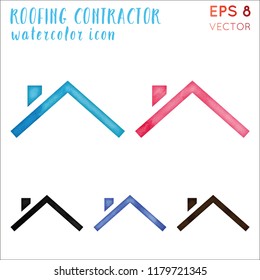Comprehending The Differences In Between Exterior And Interior Paint: Key Features And Uses
Comprehending The Differences In Between Exterior And Interior Paint: Key Features And Uses
Blog Article
Content Author-Fisker Wilkerson
When you're choosing in between interior and exterior paint, it's important to recognize their fundamental distinctions that influence both efficiency and looks. Interior paints are crafted for lower VOC degrees and smoother surfaces, making them suitable for interior rooms, while exterior paints are made to sustain extreme weather and UV exposure. Each type serves an unique objective, yet recognizing when to make use of one over the various other can considerably affect your job's end result. So, what variables should you take into consideration when making your option?
Structure and Solution
When selecting between exterior and interior paint, understanding their structure and solution is important. Inside paints generally consist of a reduced amount of unpredictable organic substances (VOCs), making them safer for indoor air high quality. You'll observe they typically have a smoother surface, which improves their capacity to resist stains and allows for easier cleaning. They're made to stand up to the rigors of indoor atmospheres, including varying humidity degrees and temperature level variations.
On the other hand, outside paints are developed to sustain harsher conditions. They typically include greater degrees of pigments and additives to resist fading from UV rays, in addition to to prevent mold and mold and mildew development. Their composition includes extra binders and materials, which supply better attachment to surfaces revealed to the aspects. This makes sure the paint can withstand rain, snow, and changing temperatures without peeling or splitting.
Efficiency and Longevity
Examining efficiency and longevity is essential when selecting in between exterior and interior paint. Inside you can try these out is made for surfaces that experience less wear and tear. It usually resists fading and scuffing, making it suitable for living rooms and rooms. However, it may not hold up well in high-moisture areas like kitchens and bathrooms without correct solution.
On the other hand, exterior paint deals with harsher conditions. It's crafted to withstand UV rays, rain, and temperature level variations. This sort of paint commonly has ingredients that avoid mold and mildew development, guaranteeing longevity in various environments. When you make use of outside paint, you can expect it to last several years much longer than interior paint, provided it's applied properly.
Another essential distinction depends on the finish choices. Inside paints usually have view website of surfaces for aesthetic appeal, while outside paints focus on resilience over shine. If https://interiorhomepaintersnearm78099.ja-blog.com/31444973/case-study-infusing-shade-right-into-a-boring-area-the-regional-painter-s-transformative-journey looking for something that can take care of the components, outside paint is your best bet.
On the other hand, if you're focused on indoor looks with much less problem for extreme problems, interior paint could be appropriate. Eventually, your selection needs to align with the certain needs of the setting.
Visual Factors to consider
A fresh layer of paint can transform a room, but visual considerations play a crucial role in your selection in between interior and exterior options. When you're selecting paint, think of the mood you intend to create. Inside paint enables you to discover a broader series of shades and surfaces, enabling you to reveal your individual style and improve your home's atmosphere. Whether you choose soft pastels or bold colors, the right interior paint can make your rooms really feel relaxing, lively, or peaceful.
On the other hand, outside paint requires to line up with your home's style and the surrounding atmosphere. Right here, you're not simply making a design statement; you're also thinking about visual appeal. Choosing shades that integrate with your community can boost your home's worth and visual allure. Remember that exterior paint is also based on fading and climate adjustments, so choosing a timeless shade can conserve you from frequent repainting.
Ultimately, take into consideration just how each choice fits your vision. By straightening your paint choice with your desired visual, you can create areas that show your individuality while maintaining functionality.
Conclusion
When it concerns picking paint, understanding the crucial distinctions between exterior and interior options is vital. Interior paints focus on visual appeals and low VOCs, making them excellent for boosting your indoor areas. On the other hand, exterior paints are designed for longevity and weather condition resistance, safeguarding your home from the aspects. By considering your specific requirements and the environment, you can with confidence choose the right paint to accomplish the appearance and durability you prefer for your space.
